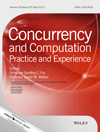On the design of energy-efficient hardware transactional memory systems
SUMMARY
Transactional memory is currently being advocated as a promising alternative to lock-based synchronization because it simplifies multithreaded programming. In this way, future many-core chip multiprocessor architectures may need to provide hardware support for transactional memory. On the other hand, energy consumption constitutes nowadays a first class consideration in multicore processor designs. In this work, we characterize the performance and energy consumption of two well-known hardware transactional memory systems that employ opposite policies for data versioning and conflict management. More specifically, we compare a LogTM-SE eager-eager system and a version of the Scalable Transactional Coherence and Consistency lazy-lazy system that enable parallel commits. To do so, we extended the Multifacet GEMS simulator to estimate the energy consumed in the on-chip caches according to CACTI and used the interconnection network energy model given by Orion 2. Results show that the energy consumption of the eager-eager system is 38% higher in average than in the lazy-lazy case, whereas performance differences between the two systems are 26% in average. We found that even though lazy-lazy beats eager-eager on average, there are considerable deviations in performance depending on the particular characteristics of each application and the settings of both systems. Finally, from this characterization, we observe that a significant part of the energy consumed in some applications in eager-eager is spent on the back-off delay phase and explore more energy-efficient hardware back-off mechanisms. For lazy-lazy systems, the way in which memory lines are assigned to the L2 cache banks affects the number of parallel commits in some applications, and we study an alternative fine-grained assignment. Copyright © 2012 John Wiley & Sons, Ltd.




